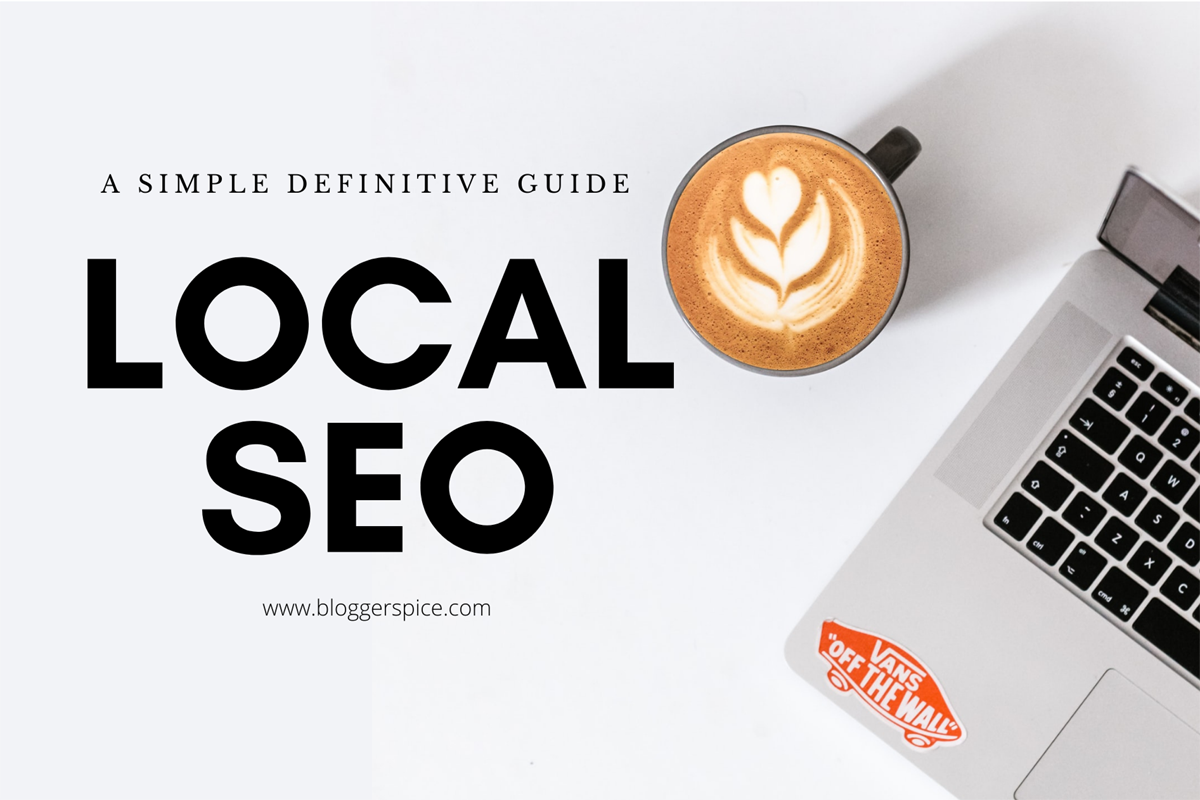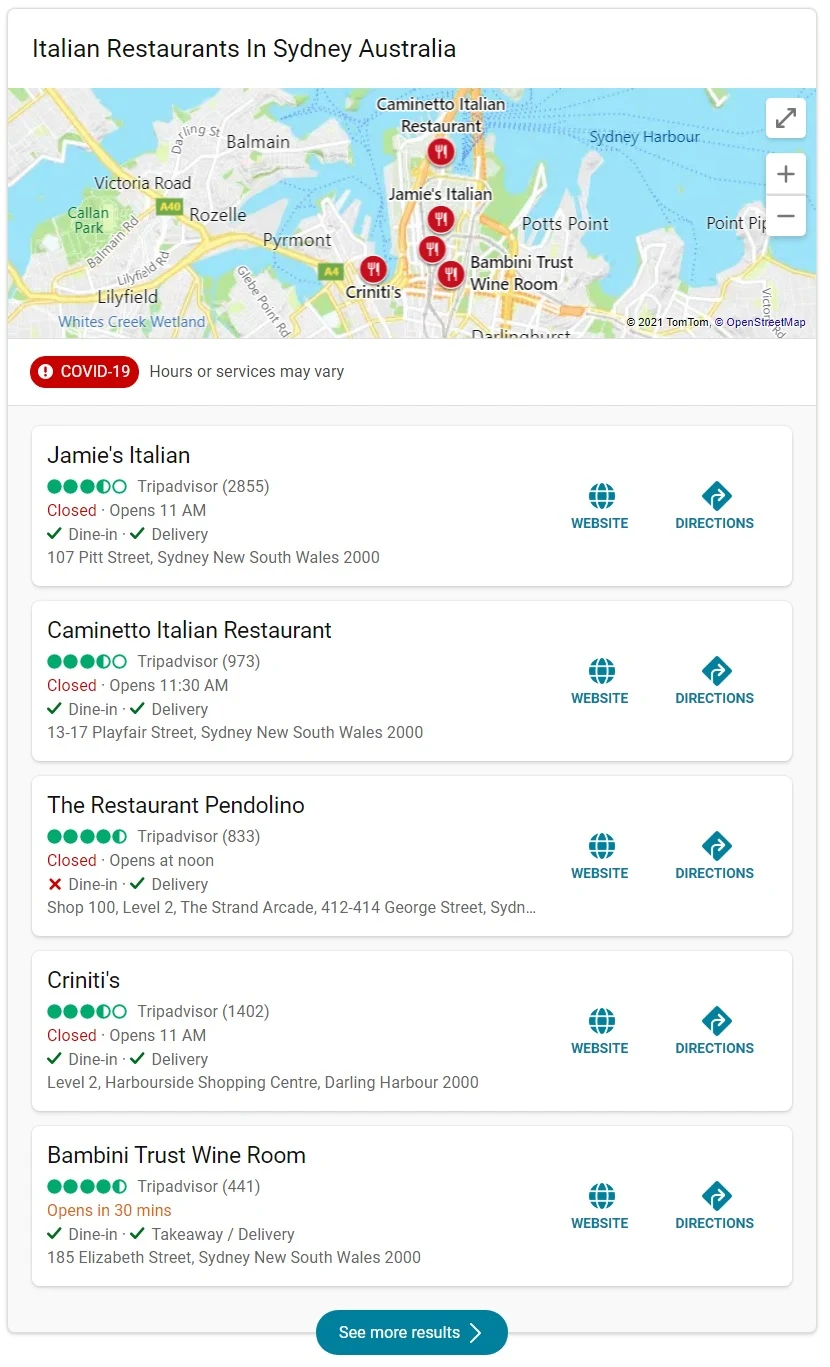Local SEO: A Simple Definitive Guide
How to Optimize Your Site for Local Search? This Comprehensive Guide to Local SEO Improve Your Local Search Rankings.
Consumers are looking for better goods and services available in their region and they need answers quickly.
Can your business appear at the precise moment that local consumers are searching? Should they prefer you over all the other local businesses that have comparable goods and services?
Perhaps you don't know how but you would like to place your local firm in Google, Bing, Apple Maps and other search engines for higher ranking and local seo link building.
Local searches account for 46% of all Google searches. However, 56% of local stores did not even claim the Google My Business listing.
Local SEO applies to the web presence optimization method to draw more attention to your businesses from local web searches. The searches are carried out on Google, Bing, Yandex and other search engines.

What is Local SEO?
Local SEO is concerned with increasing the searches visibility of companies serving their neighbourhoods. These may be physical locations, such as an SEO service firm, convenience store, electrician or a house cleaning service, that work in a certain geographic area.
Technology-wise, geographic limitations mean the search engine has to enhance its algorithm to make local businesses more relevant. If you search your smartphone for a particular Italian restaurant, it will give results that are not known country-wide or those from a massive food chain.
Instead, the search engine has an algorithm that returns "spicy food near me" results that are locally owned or near your location. Local ranking is determined by the SERP results.

Google and other search engines prioritise all establishments near you before returning a wider range of results.
Since the approach is more applicable to the local user base, optimizing your local SEO means more online traffic, leads, and conversions. Consider this targeted approach a way to help you perform more efficiently against bigger global brands with unrestricted budgets.
You will neutralize the benefit of larger brands that systematically optimize for wider keywords and rely on market awareness, rather than value propositions, to pull in traffic, by relying on unique local-SEO to-dos.
Understanding The Local SEO
When you input a search query into Google, it examines the trend of different website signals, or ranking parameters, such as the relevance of your domain, to return a list of pages that suit your search.
The majority of users are unaware that when they type something into Google's search bar, it does not perform a live search of the entire internet. It is basically looking at a directory of all the pages Google has listed. The Google Index refers to this directory.
Your website's importance, search relevancy, visibility, and link popularity are all driven by optimizing your SEO level. If the appropriate elements of your site's digital footprint are well configured, then your webpage will appear higher in further search pages.
Google discovered that people search for specific categories of businesses needs to result from their local region after observing consumer behaviour during the quadrillions of search queries. And that is why Google's local search algorithm uses a proximity attribute.
And when a query with local intent made then Google suggest the result in a sophisticated way. For this, when you search for a local keyword, Google considers your location. And this occurs if the search result seeker does not have a city name or "near me".
Local SEO is a basic but complicated mechanism that focuses on the exposure of local businesses. The local business establishment is prioritized in the search engine's results, which are usually targeted for queries that end in "near me."
In the above screenshot, we can see the Bing search engine is showing the Snack Pack result.
Google and Bing both show two distinct sets of search results:
- The “snack pack” results

- The “regular” organic results
 |
| The “regular” organic results of SEO Firm from Google Search |
One survey showed that 33% of visits are taken to the local "snack pack" results, and 40% of them being organic search query.
What factors influence local SEO?
Local requests account for over half of all Google searches. Although In the local map appears the regular Google organic search results, the key of this search results for local rankings of your webpage. But the appearance in local map results is driven by different algorithms. But you have the choice of appearing in both the main organic search results and the local map result as a local business.
According to studies, there has been a 90 per cent spike in searches containing the word "near me." Google's algorithm is now being modified to produce specific results that are geographically linked to each searcher's needs.
These results are founded on three critical factors:
- Proximity to a business
- Relevance of data
- Significance of information
if they already have the appropriate SEO parameters the close local businesses would have a better chance of appearing on the first pages of the SERP.
Local SEO - A Simple Definitive Guide
Before We Get Started
First and foremost,
You must fix the fundamentals.
61% of mobile searchers are more likely to contact a local business that has a mobile-friendly website, which means making sure that your website is mobile-friendly.
Also, you must ensure that the website does not seem to be completely unprofessional.
Let’s get started!
1. Keyword Research
The primary keywords to pursue are very clear for most companies.
Assume you're an Italian restaurant owner. How do you think people can find you?
They'll most likely search for something along the lines of:
- “Italian restaurant in Budapest”;
- “best Italian pizza in Budapest”;
- “cheap Italian food in Budapest”
You can make keywords like this. This is not rocket science.
2. Google My Business, Bing Places for Business, and Apple Maps Listings
Obviously, it is the most important aspect of the local SEO to claim and optimize Google my business listing, even though it is also important for Bing Places for Business and Apple Maps to list.
Setting this up is not too complicated — you just follow Google, Bing and Apple's guidance.
Please visit for the registration guidance by the following URLs
Take Note Of that all listing services are free and very simple that allows companies and organizations to track their online footprint through Google, Bing and Apple's various platforms, including Search and Maps.
3. Local Citations (NAP)
Citations are online references to your business that usually include your firm's name, address, and phone number. This is also known as NAP (Name, Address, Phone).
 |
| NAP citation in Google Map, showing Name, Address and Phone number of a Hungarian Coffee shop |
According to Moz, citation signals are one of the strongest local rating variables. This is true with both Google's "snack pack" and organic search results. This is most likely because reliable NAP details around the site help Google confirm the data it has on file (GMB) for a specific business.
4. On-Page Search Engine Optimization
This is another important variable for local SEO but many conventional on-page SEO focuses only on
- Keyword in the title tag (Post Title)
- Keyword in H1 (1st heading)
- Keyword in URL
- Custom Short and sweet Permalink
- Attractive meta description
This is important but for Local SEO you must consider
- NAP Information
- Schema Markup
5. Link Building (for Local Sites)
According to Moz’s 2018 survey, for local organic results “link signals” are the most important ranking factor. And for the “snack pack” search result they’re the second most important factor.

You can build link by
- Social Media Sharing
- Guest Blogging
- Sponsor local Youtube channels
- Commenting on local Review Site
- Link Building Tools
6. Create Local News Stories or Events Based Content
Publish New Content Regularly. But you should make content based on current events or local news stories.
Blogging on a daily basis accomplishes four goals:
- It sends signals to Google and visitors that the blog is regularly updated
- Obtains links
- It attracts more organic traffic and
- More leads
But don't just blog for the sake of blogging and publish articles without any objective. You should choose content quality over quantity.
For most small businesses, writing new well-researched content every month or two would be sufficient.
7. Optimize Your Website for Voice Search
In the coming years, voice quest will explode. As a result, optimizing for how users ask questions while speaking into smartphones, rather than how they type out their searches, is critical in local SEO.
When it comes to voice searches, the clients use more long-tail keywords than when they do daily searches. As a result, you'll need to tweak your content's SEO to match the more conversational sound of someone speaking. You'll need to prepare for typical question starters, for example, the question outset with who, what, when, where, why and how?
Final Thoughts
SEO emerges at a steady pace. You never notice when Google will add new additions to its SERPs for local searches, but you should always anticipate them. That's why it's important to remain on top of local SEO at all times.
Also, remember to keep track of conversions to the best of your ability including call tracking, contact form conversion tracking, etc. Otherwise, you'll have no idea of verifying if your local SEO activities are resulting in more leads, clients, and revenue for your local business.

Post a Comment